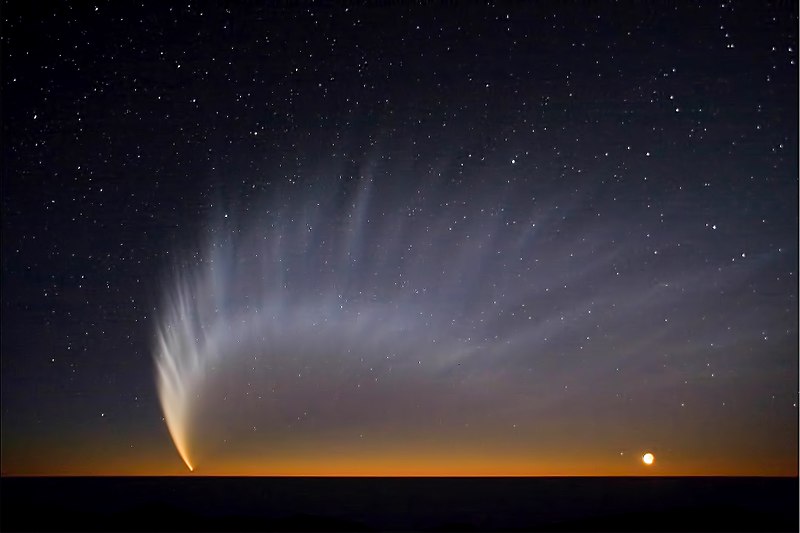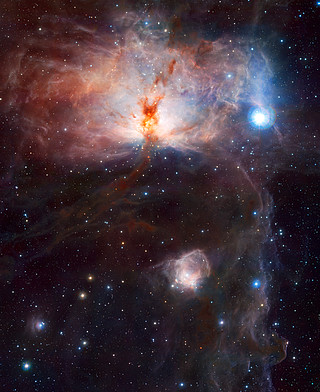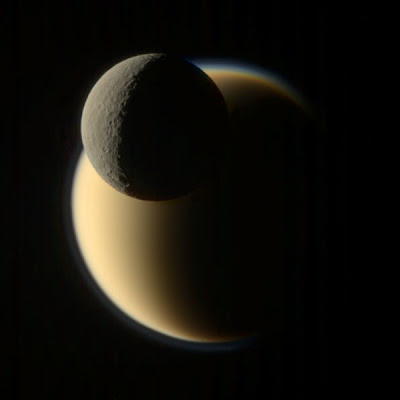
"All these worlds are yours, except Europa. Attempt no landing there. Use them together. Use them in peace."
--- HAL-9000, 2010
Welcome to the Eastside Astronomical Society blog page. This blog is used to share information found on the internet about astronomy, space travel, science, and other interesting items that may fit in.



 Here is a view of the Horsehead and Flame nebula never seen before. This is taken from the European Southern Observatory, down in South America. This is an Infrared view and covers about twice the area of the full moon.
Here is a view of the Horsehead and Flame nebula never seen before. This is taken from the European Southern Observatory, down in South America. This is an Infrared view and covers about twice the area of the full moon.


 y first try at a 2 stage model rocket years ago, flew just like this!). Seems that the tank ruptured spewing fuel out into space while spinning causing the big spiral pattern (see the videos).
y first try at a 2 stage model rocket years ago, flew just like this!). Seems that the tank ruptured spewing fuel out into space while spinning causing the big spiral pattern (see the videos).


 We all know that light pollution is one of the major factors that screws up our hobby, and view of the night skies that we used to see when we were kids. There was a test given to kids in a city once where a question was "what color is the night sky?", the kid that answered "pink!" was correct.
We all know that light pollution is one of the major factors that screws up our hobby, and view of the night skies that we used to see when we were kids. There was a test given to kids in a city once where a question was "what color is the night sky?", the kid that answered "pink!" was correct.
 Looking for a way to get a free calendar for next year? NASA released the 2010 ISS calendar this week. Looks pretty nice, but will take a lot of black ink. So unless you want to burn up your cartridges at home printing this, sneak the print job at work! (Don't mention I suggested this, and do it at your own risk!)
Looking for a way to get a free calendar for next year? NASA released the 2010 ISS calendar this week. Looks pretty nice, but will take a lot of black ink. So unless you want to burn up your cartridges at home printing this, sneak the print job at work! (Don't mention I suggested this, and do it at your own risk!)2010 International Space Station Calendar
NASA is offering a 2010 calendar that describes the work being done on the International Space Station and gives information about the crews that have lived there. The calendar contains photographs taken from the space station and highlights historic NASA milestones and fun facts about the international construction project of unprecedented complexity that began in 1998. (Note: In order to print the document correctly, please select the two-sided print option in your printer dialog box)
 "You can't see the space station, it's in space!" a comment of disbelief I have heard when I point out the ISS passing overhead. So wrong! Of course it can be seen, it's only about 250 miles straight up. The photo on the right is one of my attempts from my backyard. The photo was taken with a cheap $30 webcam off Ebay, and hand guiding the 12" LX200 scope.
"You can't see the space station, it's in space!" a comment of disbelief I have heard when I point out the ISS passing overhead. So wrong! Of course it can be seen, it's only about 250 miles straight up. The photo on the right is one of my attempts from my backyard. The photo was taken with a cheap $30 webcam off Ebay, and hand guiding the 12" LX200 scope.
 More fun than Christmas shopping too.
More fun than Christmas shopping too.
 This comes from "Bad Astronomy" Phil Plait's blog, but had to borrow this from it since it was so much fun. This is a playground toy in Portugal. Probably an old playground from the 70s when Space: 1999 was still on TV and popular (or I think it was popular?). I used to watch it every week!
This comes from "Bad Astronomy" Phil Plait's blog, but had to borrow this from it since it was so much fun. This is a playground toy in Portugal. Probably an old playground from the 70s when Space: 1999 was still on TV and popular (or I think it was popular?). I used to watch it every week! That geyser image from yesterday rates way up there on the coolness scale of space images. I think we have a 3 way tie between Apollo 8's Earthrise, and Phoenix on the chute.
That geyser image from yesterday rates way up there on the coolness scale of space images. I think we have a 3 way tie between Apollo 8's Earthrise, and Phoenix on the chute.


 WOW! We have been wondering about those plumes from Enceladus for a long time now. Cassini has made a few flybys also, but never got a good image of the plumes from the source.
WOW! We have been wondering about those plumes from Enceladus for a long time now. Cassini has made a few flybys also, but never got a good image of the plumes from the source. | Some more info on Emily's site |
| Some more info on Emily's site |

 Someday, I'll get some clear skies to test out my $360 worth of new filters. I bought a CLS filter, which should help with light pollution, and another H-Alpha filter (this goes into the camera body rather than screw on externally). I'll sell my old H-Alpha filter to justify the cost of this one. :-)
Someday, I'll get some clear skies to test out my $360 worth of new filters. I bought a CLS filter, which should help with light pollution, and another H-Alpha filter (this goes into the camera body rather than screw on externally). I'll sell my old H-Alpha filter to justify the cost of this one. :-)
 Another 40th anniversary. This time it's the launch of Apollo 12, November 14, 1969. Pete Conrad, Dick Gordon, and Alan Bean were the 2nd flight to the moon after Apollo 11. Launching into a thunderstorm, the Saturn V was hit by lightning twice. "I got three fuel cell lights, an AC bus light, a fuel cell disconnect, AC bus overload 1 and 2, Main Bus A and B out!" was the call to Mission Control from Pete Conrad - who sat there with his hand on the abort handle.
Another 40th anniversary. This time it's the launch of Apollo 12, November 14, 1969. Pete Conrad, Dick Gordon, and Alan Bean were the 2nd flight to the moon after Apollo 11. Launching into a thunderstorm, the Saturn V was hit by lightning twice. "I got three fuel cell lights, an AC bus light, a fuel cell disconnect, AC bus overload 1 and 2, Main Bus A and B out!" was the call to Mission Control from Pete Conrad - who sat there with his hand on the abort handle.
 (Credit to forum on CloudyNights for the photo - and Astromick blog where I saw this!)
(Credit to forum on CloudyNights for the photo - and Astromick blog where I saw this!)
Launch 2 March 2004
1st Earth swingby 4 March 2005 (distance from Earth: 1955 km)
Mars swingby 25 February 2007 (distance from Mars: 250 km)
2nd Earth swingby 13 November 2007 (distance from Earth: 5301 km)
Steins flyby 5 September 2008 (distance from Steins: 800 km)
3rd Earth swingby 13 November 2009 (distance from Earth: 2500 km)
Lutetia flyby 10 June 2010 (distance from Lutetia: 3000 km)
Comet rendezvous maneuvers 22 May 2014 (distance from comet: 600 000–100 000 km)
Lander delivery 10 November 2014 (distance from comet: 1–2 km)
End of mission December 2015


 | Rosetta ESA site |
| Rosetta ESA site | Today one of the big stories on a lot of the news sites (CNN, and other non-science sites even!) was that NASA released results from the LCROSS impact last month. Water has been confirmed on the moon. "Indeed yes, we found water. We didn't find just a little bit we found a significant amount," said Tony Colaprete, principal investigator for LCROSS at a press conference.
Today one of the big stories on a lot of the news sites (CNN, and other non-science sites even!) was that NASA released results from the LCROSS impact last month. Water has been confirmed on the moon. "Indeed yes, we found water. We didn't find just a little bit we found a significant amount," said Tony Colaprete, principal investigator for LCROSS at a press conference.